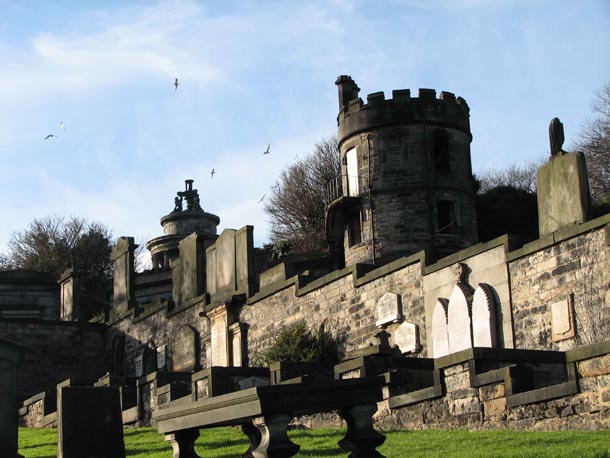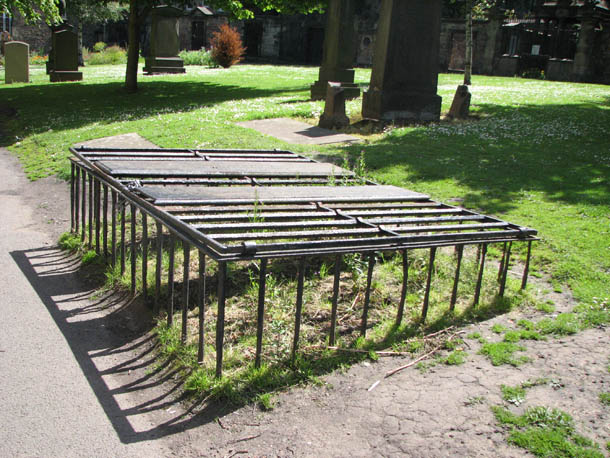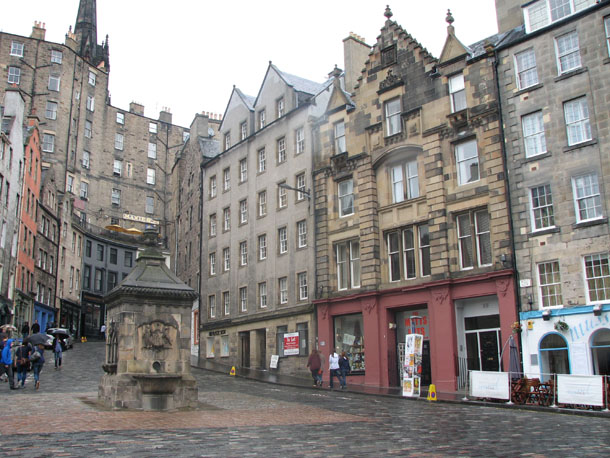Author Brian Ruckley has just written a new horror novel based in Edinburgh. Here he reveals how the city inspired him…

I love the place, but not just for its beauty and summer, arty energy; I like its age, too, and the dark, complicated texture of its history. That was the aspect of the city that inspired my latest novel, The Edinburgh Dead , a dark and horrific fantasy. Perhaps the happy hordes of Festival-goers don’t know just how close to the surface some of the darkness is, and how many signs of it are all around them…
One of the city pubs that attracts more than a few tourists to sample Scottish hospitality is called Deacon Brodie’s. A lot of those visitors probably don’t know that Deacon Brodie is something of a local historical celebrity. In late 18 th century Edinburgh, he was a respected cabinet-maker, locksmith and city councillor by day; a gambler, womaniser and skilled burglar by night. He was eventually hanged, but the best bit of the story? Well, supposedly, in his day job, Brodie had designed the very gallows upon which he was hung.
It’s said that Deacon Brodie’s sinister double life inspired Robert Louis Stevenson (an Edinburgh native) to write Jekyll and Hyde . Stevenson drew on other horrors from Edinburgh’s history in his short story The Bodysnatchers . Edinburgh was far from the only British city to be plagued by the gruesome trade described in that tale – the theft of fresh corpses from their graves to provide specimens for anatomical dissection – but it has the dubious distinction of producing the most famous bodysnatchers of all: Burke and Hare.
Burke and Hare weren’t strictly bodysnatchers at all, though. They thought it a mug’s game to idly wait around for folk to die before appropriating their mortal remains; they decided to cut out the middleman – natural death - and turned to murder, mostly by suffocation since the respected anatomists who bought the cadavers required unmarked goods. It’s not absolutely certain how many men and women they killed (and sold), though the minimum figure is probably seventeen.
The legacy of bodysnatching has left permanent markers upon the city’s fabric, which only the most observant or well-informed of visitor would notice or understand. How many cities, for example, have fortified watchtowers in their oldest cemeteries? Well, Edinburgh does. Built at the height of the bodysnatching plague, to deter the corpse-thieves.

One of the city-centre graveyards is, in fact, a major tourist destination in its own right: that of Greyfriars Kirk, where a little dog called Bobby sat (doggedly, you might say) upon his master’s grave for years. But the countless tourists who go to leave tokens and gifts on the site of Bobby’s grave could discover a much more disturbing aspect of Edinburgh’s past if they but ventured around the corner of the church. For there, amongst all the weathered and faded headstones, are a handful of graves protected by impregnable cages of iron bars. The relatives of those who lie beneath these dour cages did not want their rest disturbed by the bodysnatchers, and went to great – and expensive – lengths to be sure of it.
Sign up to the SFX Newsletter
Get sneak previews, exclusive competitions and details of special events each month!
A short walk from Greyfriars Kirkyard takes the wandering tourist to the Grassmarket, now the place for eating, drinking and browsing market stalls. Once, another of Edinburgh’s several execution sites. At one end of the Grassmarket, an attractive winding street called the West Bow was, back in the 17 th century, the residence of a certain Major Thomas Weir, respected and well-known retired army man.
Also, he confessed from his sickbed late in life, an intimate of Satan and practitioner of the dark arts. He and his sister provided a vivid and detailed account of their numerous foul and corrupt misdeeds, which included incest, bestiality and sorcery, securing the Major’s place in the city’s folklore as its most black-hearted warlock. Nowadays, the pair of them would be consigned to psychiatric treatment. In 1670, they were executed: the sister by hanging, Weir himself by strangulation and burning.
All of this is but a small sampling of the dark tales that have attached themselves to one small part of central Edinburgh. The city abounds in such historical shadows, and they made it a rich source of inspiration for The Edinburgh Dead . I might have made up a great deal of what happens in the pages of that book, but there’s a lot I didn’t have to make up, because the real history I was drawing upon was so richly dark to begin with.
To end on a brighter note, though, Edinburgh is a city of pubs and bars, so it is fitting that so much of its history – grisly and otherwise – is commemorated in the names of drinking establishments. Greyfriar’s Bobby has his own pub, just as Deacon Brodie does. And Burke and Hare... well, Burke and Hare have a strip bar named after them. What they would make of that, I have no idea.
If, after all that you still feel like visiting Edinburgh, take part in our exclusive The Edinburgh Dead competition .

SFX Magazine is the world's number one sci-fi, fantasy, and horror magazine published by Future PLC. Established in 1995, SFX Magazine prides itself on writing for its fans, welcoming geeks, collectors, and aficionados into its readership for over 25 years. Covering films, TV shows, books, comics, games, merch, and more, SFX Magazine is published every month. If you love it, chances are we do too and you'll find it in SFX.


